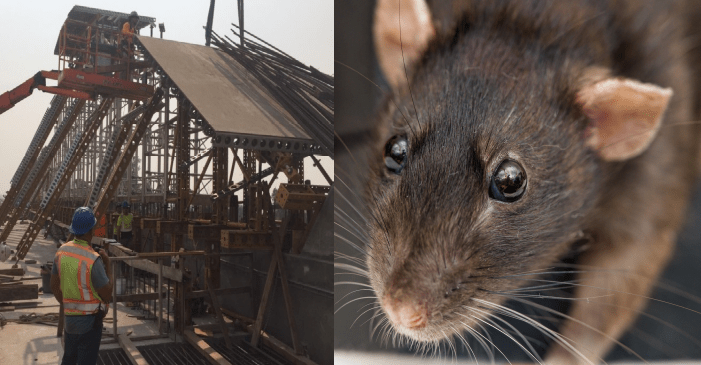Rodents, bugs, asbestos, drug deals, arson. Those are all parts of the "trail of grief among the disadvantaged of the San Joaquin Valley" caused by California's bullet train project, according to the L.A. Times's Ralph Vartabedian, the paper's chief anti-high-speed rail propagandist.
Even for Vartabedian, last week's hit piece was unbelievably one-sided and absurd.
Of course, the Central Valley had drugs, unemployment, and bad air quality long before high-speed rail construction began. A lot of those problems were exacerbated by the decision to bypass the cities of the Central Valley when the state built Interstate 5 in the 1960s.
High-speed rail is designed to serve the cities of the Central Valley in part to help address those problems. As Chuck Riojas, Executive Director of the Fresno Madera Tulare Kings Building Trades Council put it when Streetsblog toured the construction in the Central Valley last month, the jobs generated by the project have already “pretty much saved the Valley.”
Vartabedian's one-sided piece fails to notice the benefits of rail construction, while finding plenty of issues caused by the current (and future) construction of hundreds of miles of the two-track high-speed rail mainline.
All large construction projects have impacts. Rail is fairly compact - especially in comparison to automotive infrastructure - but if one searches (as Vartabedian clearly has) one can find adverse impacts. The CA High-Speed Rail Authority has minimized impacts by siting most of the alignment along existing rail and utility corridors (as seen in the photo above).
It's a pernicious double standard that the L.A. Times has focused on construction impacts from a new rail line 200 miles away, while ignoring worse transportation construction impacts in Southern California. Streetsblog Los Angeles' Joe Linton seems to be the only reporter covering the displacement and pollution caused by L.A. County's numerous freeway widening projects - and their 'trail of grief' among L.A.'s disadvantaged. Linton has exposed these excesses, and amplified the voices of L.A. communities fighting these projects. But the L.A. Times has a history of critiquing rail (for issues including cost overruns) while ignoring similar issues with highway projects.
And if anti-HSR forces have their way, rail money would be transferred to freeway widening, as reported in the Central Valley's The Sun. How many people would be displaced by the freeway lanes that would be required to equal the capacity of the rail line now under construction? And if freeways are widened instead, more vehicle traffic will lead to more air pollution.
Then there's another double standard in Vartabedian's story:
In one of its biggest political compromises, the rail authority agreed to delete two sets of tracks and viaducts over 50 miles through the wealthy communities of Silicon Valley after residents mobilized a campaign, backed by local, state and federal politicians. The changes will translate into a slower bullet train, forcing it to share ground-level tracks with the Caltrain commuter rail system. It also saved a lot of money.
Here Vartabedian contrasts CAHSRA's supposed harm to low-income Central Valley communities with the Authority's compromise with rich peninsula communities. (Indeed, it is a shame that the Authority was unable to widen and improve that existing alignment into a four-track mainline with full grade-separation. Such improvements would have allowed for more frequent service and safer operations for both high-speed rail and Caltrain, although the speed difference is minimal.)
But where was Vartebedian when the Peninsula compromise was being planned? Actually, he was a participant, cheer-leading those same rich Peninsula communities.
Google "LA Times and Elizabeth Alexis." Alexis is a co-founder of Californians Advocating Responsible Rail Design (CAARD) - a key representative of what Vartabedian now characterizes as the politically powerful, wealthy, and privileged communities of Silicon Valley. Vartabedian wrote some 25 pieces that are essentially press releases from CAARD. Back then he identified them as objective and innocent high-speed rail watchdogs and critics.
If ten years ago Vartabedian had identified Alexis and her colleagues on the Peninsula as people with "political connections and money," instead of watchdogs, maybe they would have failed to force a compromise on the Caltrain mainline. But now, according to Vartabedian, opponents on the Peninsula are part of a politically privileged class who get what they want because they're rich, while the state sticks it to the poor of the Central Valley?
Sorry Ralph, but pick your narrative.






